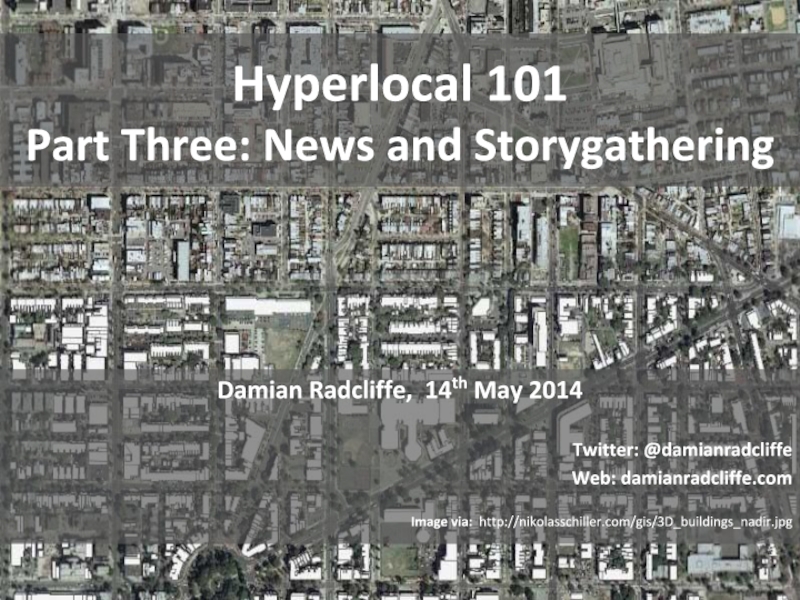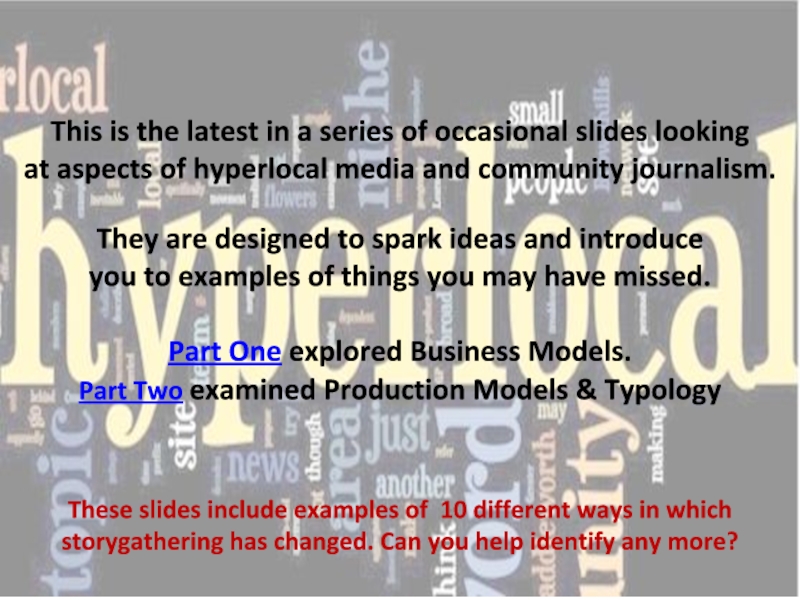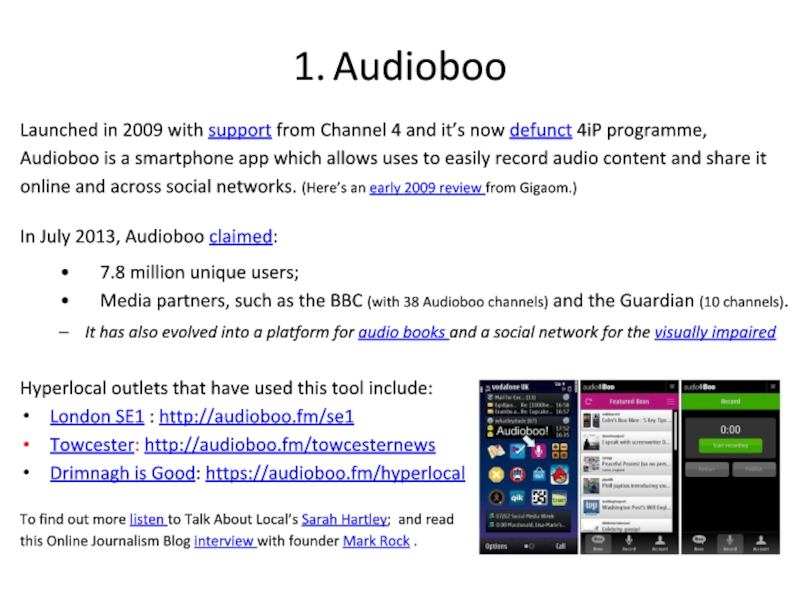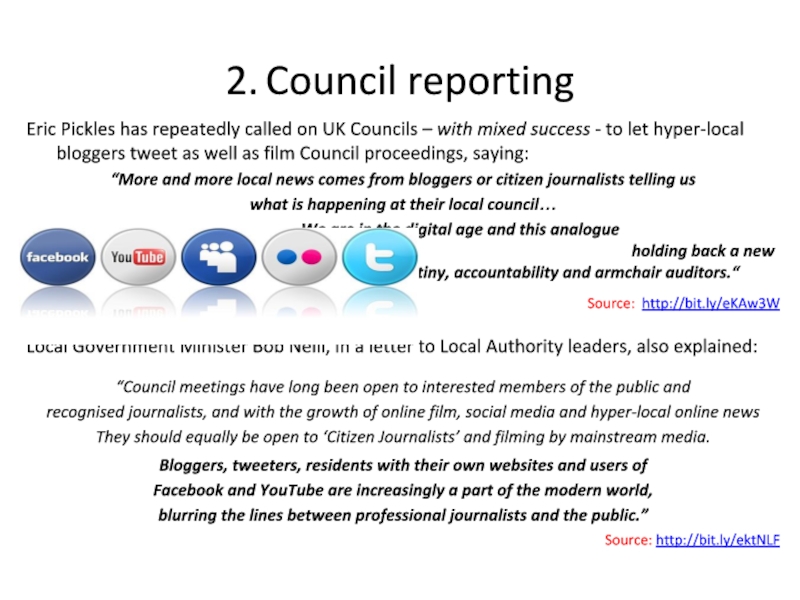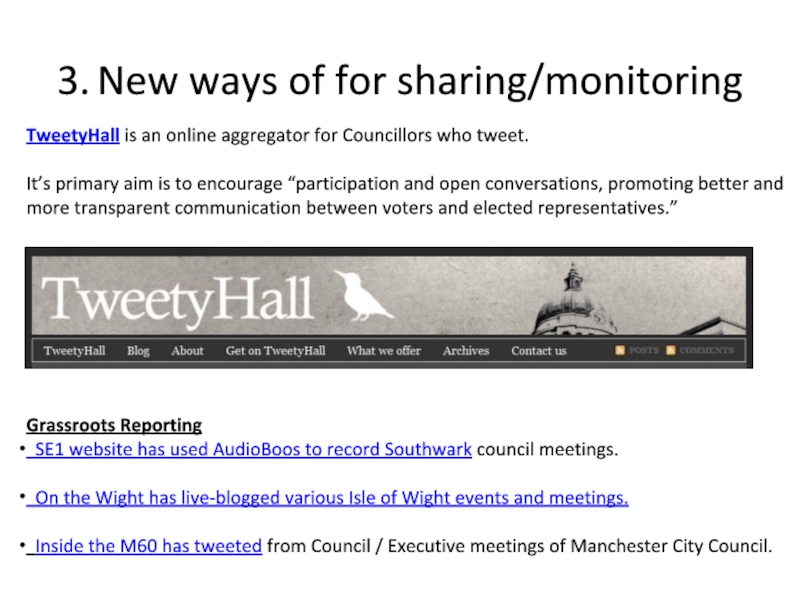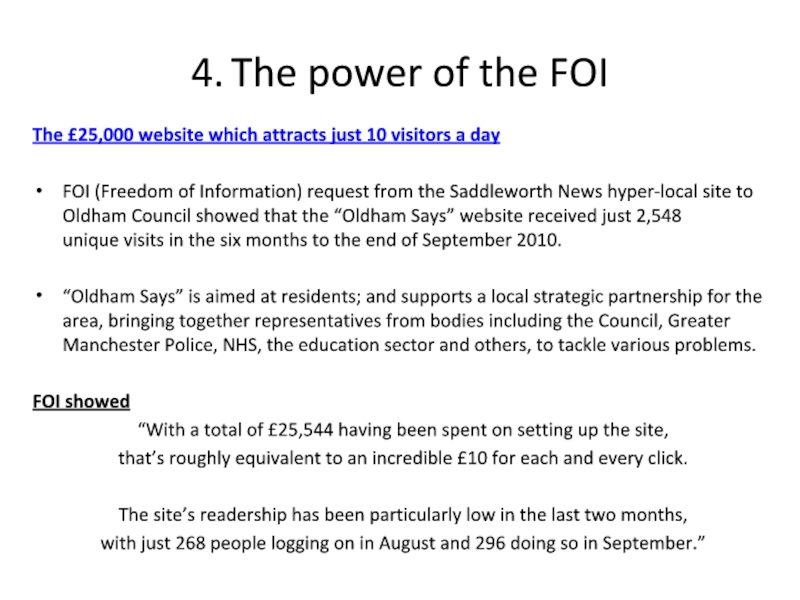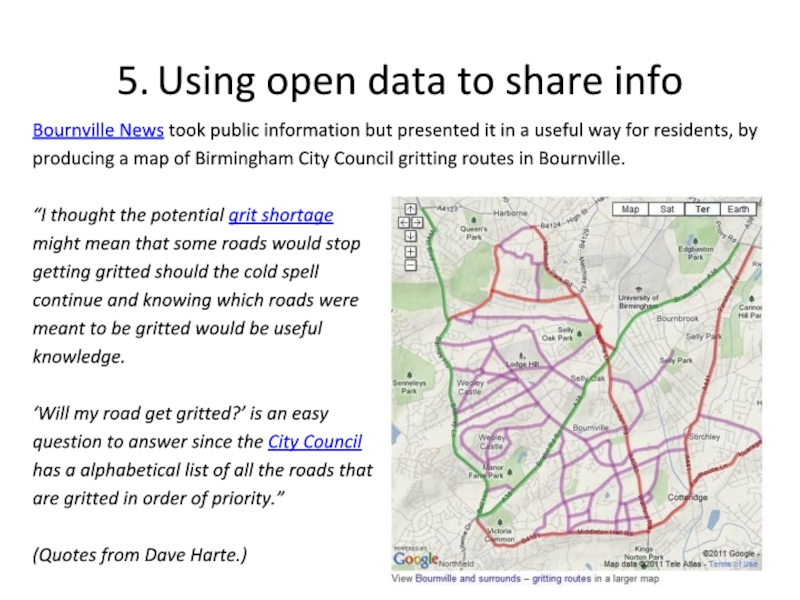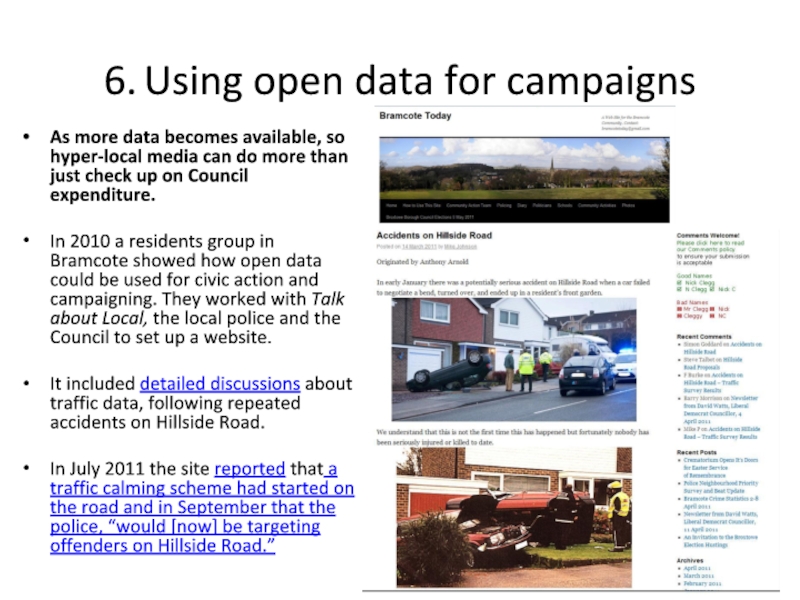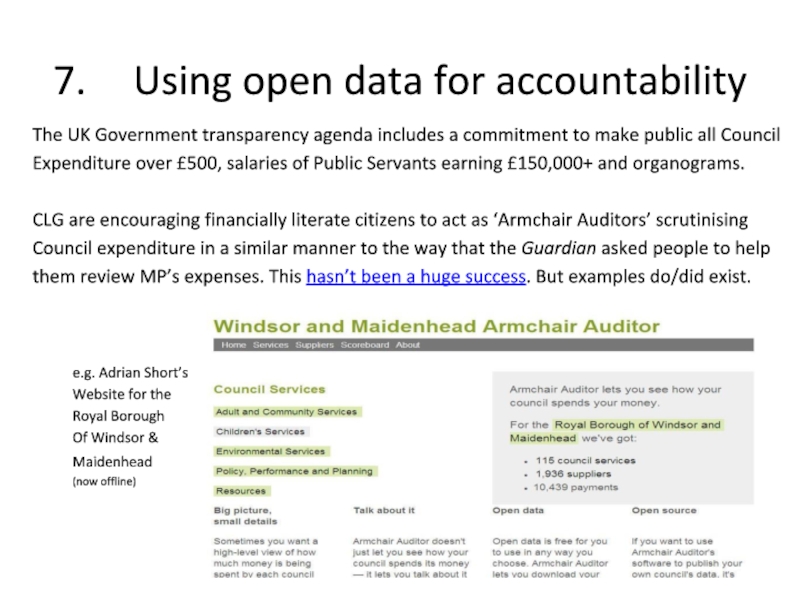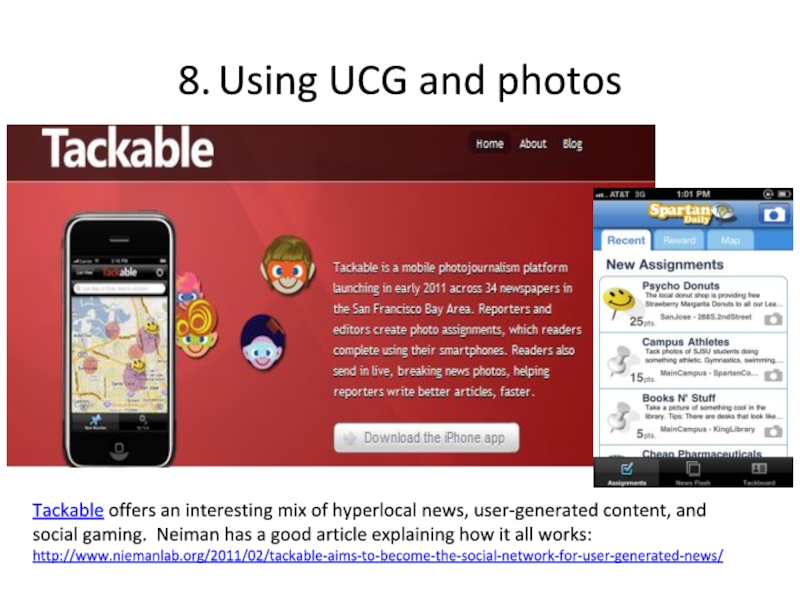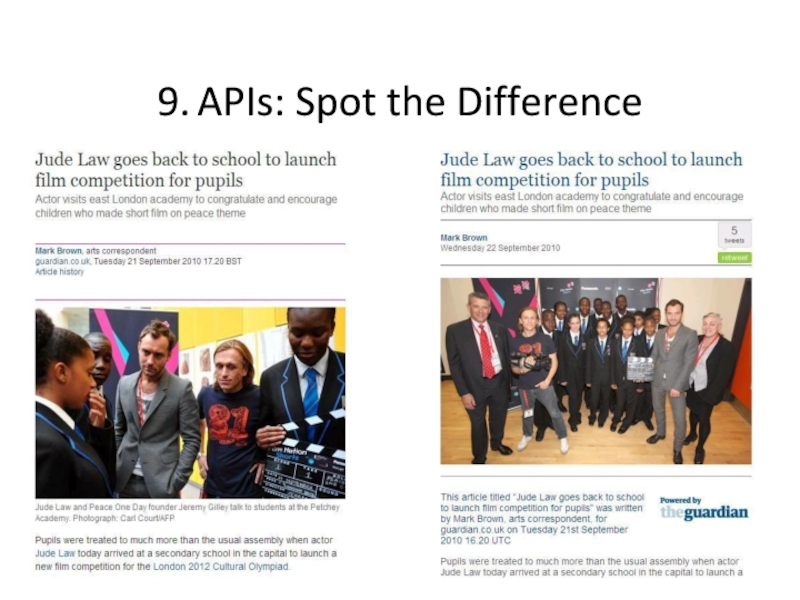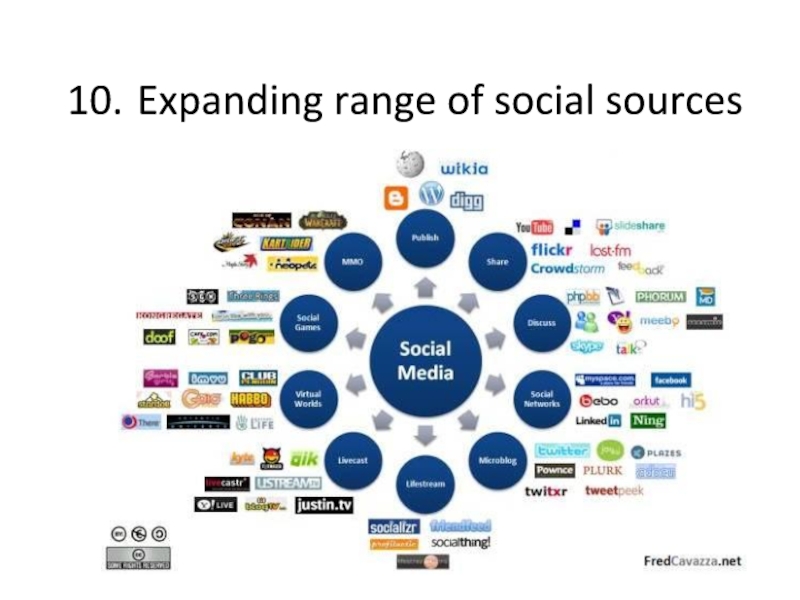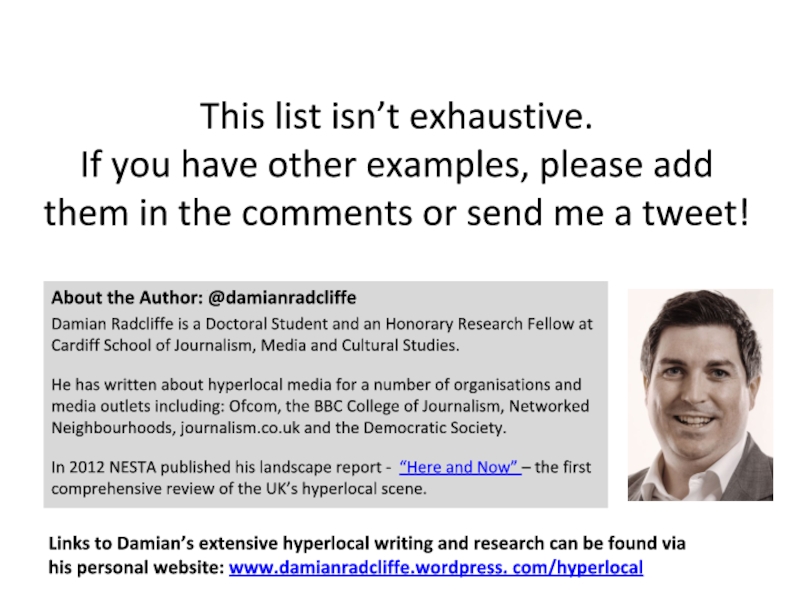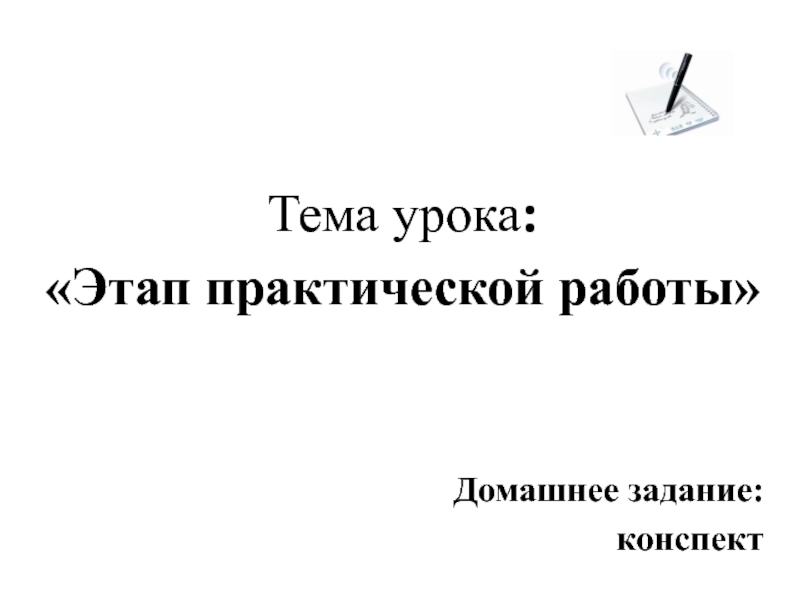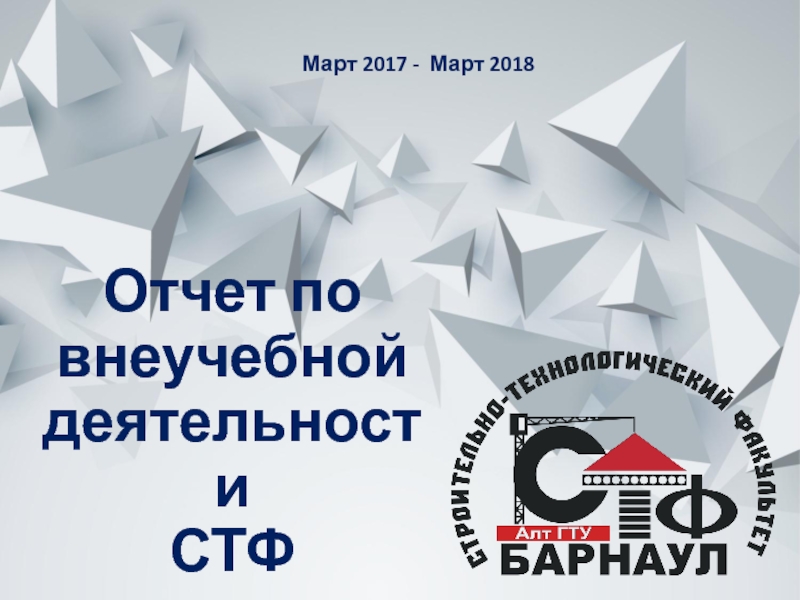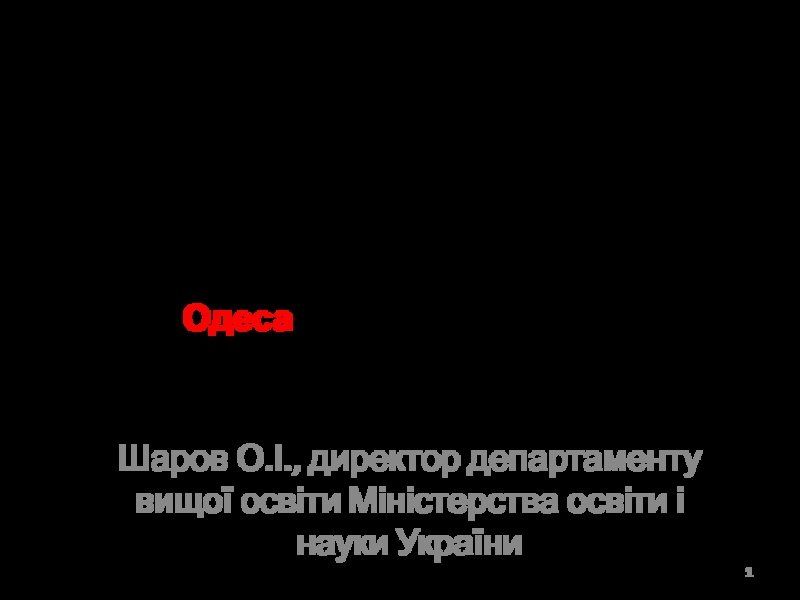- Главная
- Разное
- Дизайн
- Бизнес и предпринимательство
- Аналитика
- Образование
- Развлечения
- Красота и здоровье
- Финансы
- Государство
- Путешествия
- Спорт
- Недвижимость
- Армия
- Графика
- Культурология
- Еда и кулинария
- Лингвистика
- Английский язык
- Астрономия
- Алгебра
- Биология
- География
- Детские презентации
- Информатика
- История
- Литература
- Маркетинг
- Математика
- Медицина
- Менеджмент
- Музыка
- МХК
- Немецкий язык
- ОБЖ
- Обществознание
- Окружающий мир
- Педагогика
- Русский язык
- Технология
- Физика
- Философия
- Химия
- Шаблоны, картинки для презентаций
- Экология
- Экономика
- Юриспруденция
Hyperlocal 101Part Three: News and Storygathering презентация
Содержание
- 1. Hyperlocal 101Part Three: News and Storygathering
- 2. This is the latest in a series
- 3. 1. Audioboo Launched in 2009 with support from
- 4. 2. Council reporting Eric Pickles has repeatedly
- 5. 3. New ways of for sharing/monitoring
- 6. 4. The power of the FOI The
- 7. 5. Using open data to share info
- 8. 6. Using open data for campaigns As
- 9. 7. Using open data for accountability
- 10. 8. Using UCG and photos
- 11. 9. APIs: Spot the Difference
- 12. 10. Expanding range of social sources
- 13. This list isn’t exhaustive.
Слайд 1Hyperlocal 101
Part Three: News and Storygathering
Damian Radcliffe, 14th May 2014
Twitter: @damianradcliffe
Web: damianradcliffe.com
Image via: http://nikolasschiller.com/gis/3D_buildings_nadir.jpg
Слайд 2This is the latest in a series of occasional slides looking at
These slides include examples of 10 different ways in which storygathering has changed. Can you help identify any more?
Слайд 31. Audioboo
Launched in 2009 with support from Channel 4 and it’s now
Audioboo is a smartphone app which allows uses to easily record audio content and share it
online and across social networks. (Here’s an early 2009 review from Gigaom.)
In July 2013, Audioboo claimed:
• 7.8 million unique users;
• Media partners, such as the BBC (with 38 Audioboo channels) and the Guardian (10 channels).
It has also evolved into a platform for audio books and a social network for the visually impaired
Hyperlocal outlets that have used this tool include:
London SE1 : http://audioboo.fm/se1
Towcester: http://audioboo.fm/towcesternews
Drimnagh is Good: https://audioboo.fm/hyperlocal
To find out more listen to Talk About Local’s Sarah Hartley; and read
this Online Journalism Blog interview with founder Mark Rock .
Слайд 42. Council reporting
Eric Pickles has repeatedly called on UK Councils –
“More and more local news comes from bloggers or citizen journalists telling us
what is happening at their local council…
…We are in the digital age and this analogue interpretation of the press access rules is holding back a new wave of local scrutiny, accountability and armchair auditors.“
Source: http://bit.ly/eKAw3W
Local Government Minister Bob Neill, in a letter to Local Authority leaders, also explained:
“Council meetings have long been open to interested members of the public and
recognised journalists, and with the growth of online film, social media and hyper-local online news
They should equally be open to ‘Citizen Journalists’ and filming by mainstream media.
Bloggers, tweeters, residents with their own websites and users of
Facebook and YouTube are increasingly a part of the modern world,
blurring the lines between professional journalists and the public.”
Source: http://bit.ly/ektNLF
Слайд 53. New ways of for sharing/monitoring
TweetyHall is an online aggregator for
It’s primary aim is to encourage “participation and open conversations, promoting better and more transparent communication between voters and elected representatives.”
Grassroots Reporting
SE1 website has used AudioBoos to record Southwark council meetings.
On the Wight has live-blogged various Isle of Wight events and meetings.
Inside the M60 has tweeted from Council / Executive meetings of Manchester City Council.
Слайд 64. The power of the FOI
The £25,000 website which attracts just 10
FOI (Freedom of Information) request from the Saddleworth News hyper-local site to Oldham Council showed that the “Oldham Says” website received just 2,548 unique visits in the six months to the end of September 2010.
“Oldham Says” is aimed at residents; and supports a local strategic partnership for the area, bringing together representatives from bodies including the Council, Greater Manchester Police, NHS, the education sector and others, to tackle various problems.
FOI showed
“With a total of £25,544 having been spent on setting up the site,
that’s roughly equivalent to an incredible £10 for each and every click.
The site’s readership has been particularly low in the last two months,
with just 268 people logging on in August and 296 doing so in September.”
Слайд 75. Using open data to share info
Bournville News took public information but
producing a map of Birmingham City Council gritting routes in Bournville.
“I thought the potential grit shortage
might mean that some roads would stop
getting gritted should the cold spell
continue and knowing which roads were
meant to be gritted would be useful
knowledge.
‘Will my road get gritted?’ is an easy
question to answer since the City Council
has a alphabetical list of all the roads that
are gritted in order of priority.”
(Quotes from Dave Harte.)
Слайд 86. Using open data for campaigns
As more data becomes available, so hyper-local
In 2010 a residents group in Bramcote showed how open data could be used for civic action and campaigning. They worked with Talk about Local, the local police and the Council to set up a website.
It included detailed discussions about traffic data, following repeated accidents on Hillside Road.
In July 2011 the site reported that a traffic calming scheme had started on the road and in September that the police, “would [now] be targeting offenders on Hillside Road.”
Слайд 97. Using open data for accountability
The UK Government transparency agenda includes
Expenditure over £500, salaries of Public Servants earning £150,000+ and organograms.
CLG are encouraging financially literate citizens to act as ‘Armchair Auditors’ scrutinising
Council expenditure in a similar manner to the way that the Guardian asked people to help
them review MP’s expenses. This hasn’t been a huge success. But examples do/did exist.
e.g. Adrian Short’s
Website for the
Royal Borough
Of Windsor &
Maidenhead
(now offline)
Слайд 108. Using UCG and photos
Tackable offers an interesting mix of hyperlocal
http://www.niemanlab.org/2011/02/tackable-aims-to-become-the-social-network-for-user-generated-news/
Слайд 13 This list isn’t exhaustive. If you have other examples, please add
About the Author: @damianradcliffe
Damian Radcliffe is a Doctoral Student and an Honorary Research Fellow at Cardiff School of Journalism, Media and Cultural Studies.
He has written about hyperlocal media for a number of organisations and media outlets including: Ofcom, the BBC College of Journalism, Networked Neighbourhoods, journalism.co.uk and the Democratic Society.
In 2012 NESTA published his landscape report - “Here and Now” – the first comprehensive review of the UK’s hyperlocal scene.
Links to Damian’s extensive hyperlocal writing and research can be found via his personal website: www.damianradcliffe.wordpress. com/hyperlocal
